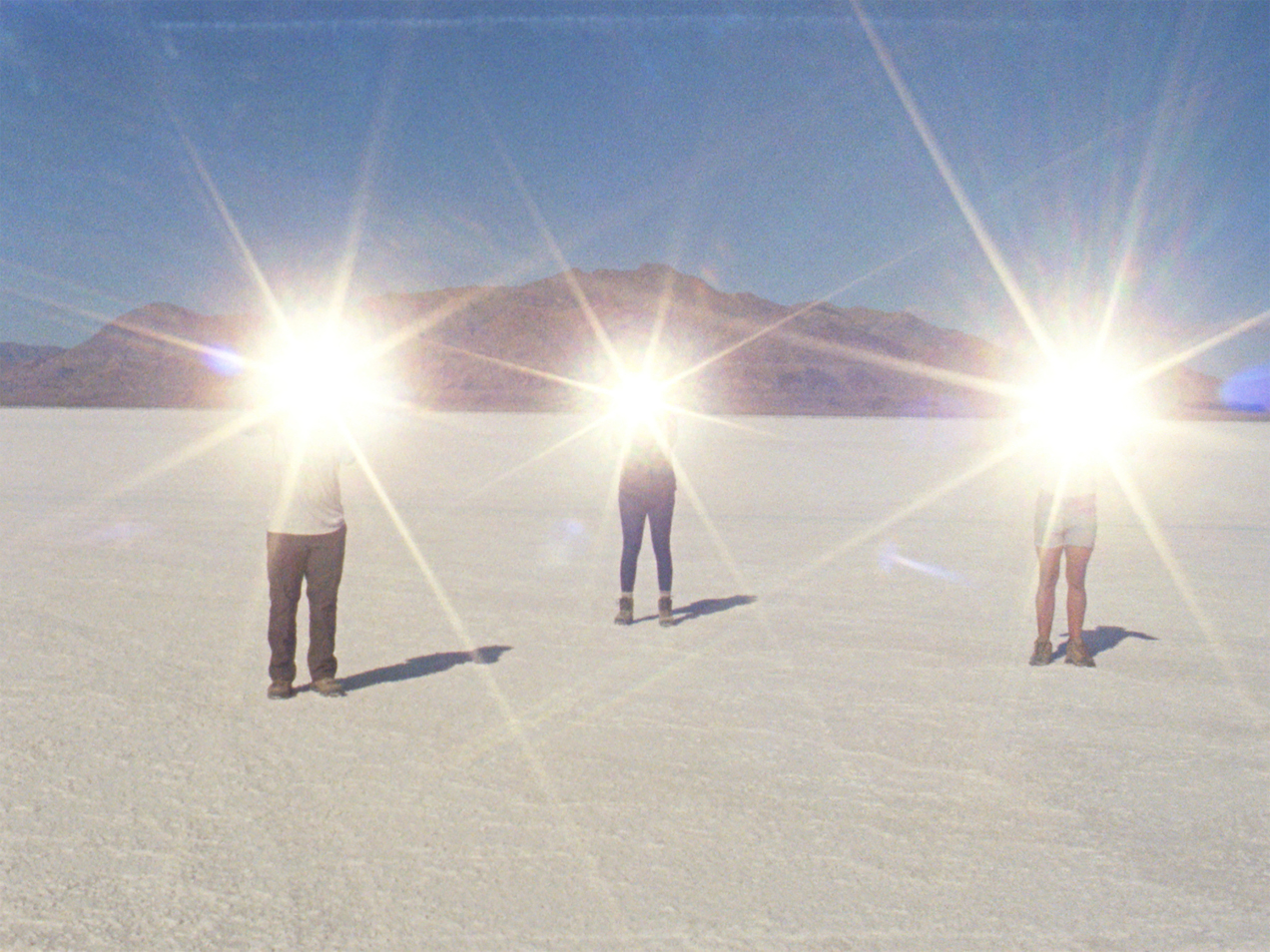
Evolution and extinction from the point of view of rocks and various future others. The geo-biosphere is introduced as a place of evolutionary possibility, where humans disappear but life endures.
EN
“The project originated from two novellas of J.-H. Rosny, the joint pseudonym of the Belgian brothers Boex who wrote on natural, prehistoric and speculative subjects – sci fi before it was a genre. The film takes up their pluralist vision of evolution, where imagining prehistory is inseparable from envisioning the future. Also central are Roger Caillois’ writing on stones, Robert Hazen’s theory of Mineral Evolution, Clarice Lispector’s Hour of the Star, the Symbiosis theory of Lynn Margulis, multi-species scenarios of Donna Haraway, Hazel Barton’s research on cave microbes and Marcia Bjørnerud’s thoughts on time literacy. In one way or another, these thinkers have all sought to displace humankind and human reason from the center of evolutionary processes. Passages from Rosny and interviews with Bjørnerud form the film's science-fictional / science-factual spine. Stones are its anchor. To touch stone is to meet alien duration. We trust stone as archive, but we may as well write on water. In the end, it’s particles that remain.”
Deborah Stratman1
“Talk about rejecting empathy: Stratman’s haunting, iridescent work of science-nonfiction actively decenters the human perspective, narrating the history and the speculative future of the universe with rocks as its protagonists. The idea that minerals evolve over time – and preserve records of our world’s many lives – drives Stratman’s inquiry, which, as is often the case with her work, is at once dryly analytical, politically urgent, and cinematically riveting. The framing narrative is culled from texts including Clarice Lispector’s The Hour of the Star and works by J.H. Rosny, the pen name for the Boex brothers, who wrote a series of novels in the late 1800s in which the future looks a lot like the prehistoric past, evacuated of anthropomorphic life and taken over by ‘inorganic’ aliens. These excerpts are read by the filmmaker Valérie Massadian (Nana, Milla) in a voiceover that instantly brought to my mind Chris Marker’s La Jetée (1962) – another dystopian tale in which past and future blur together, and humans, for all their hubris, seem impotent.”
Devika Girish2
“Last Things, the latest work from Deborah Stratman, participates in a small but growing trend in experimental filmmaking. Following certain tendencies in contemporary philosophy, Last Things attempts to communicate a radically non-anthropocentric view of existence. But, unlike many popular approaches to this problem – envisioning a world without ‘us’ – Last Things avoids the fashionable fetish for apocalypse. While Stratman’s film does suggest the possibility, even the inevitability, of a world without the human race and all other known fauna, it works to place this development into an equally non-anthropocentric time frame. For geological formations – rocks, sediments, magnetic forces – there is not a ‘before’ and ‘after’ in the way we conceive it. As one of the film’s narrators expresses it, minerals can display elements of the past, signs of what they once were. But they do not remember this past – or more properly speaking, their past becomes an integral part of their present state. Rocks ‘remember’ without the burden of consciousness.”
Michael Sicinski3
- 1Deborah Stratman, “Last Things”.
- 2Devika Girish, “Sundance 2023: How Does It Feel?,” Film Comment, 6 February 2023.
- 3Michael Sicinski, “Aether/Ore. Posthumanism in Deborah Stratman’s Last Things,” Cinema Scope, 24 March 2023.

